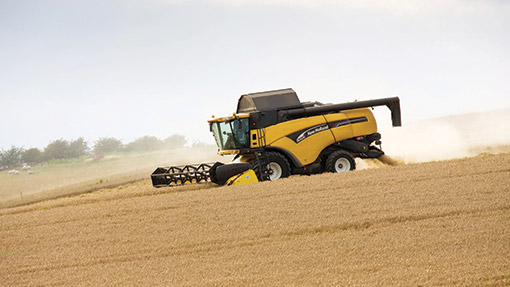Poultry industry sees cheaper feed grain outlook

The greatest uncertainty for grain markets is always the weather – from the time the crop is planted until it is harvested.
It is quite easy to predict the demand side, based upon population growth, changing diets and the dynamics of world trade. But supply side calculations are different every year.
So what are the key drivers this year? Overall, global crop prospects look pretty good, with Europe and the USA in particular anticipating decent harvests. The old adage of “it’s never a harvest until it’s in the barn” still rings true though, and doing nothing is as great a risk as covering everything all in one go.
 Richard Whitlock
Richard WhitlockIndependent grain market analyst
As is often the case, US maize dominates the price matrix, with all other feed grain prices linked to it.
There are other issues that can spook the markets, though, such as political or commercial bombshells. The recent enforced repatriation of Crimea by Russia pushed 2014 crop markets back up to their season highs. Since then tensions have eased a little and markets have come down again as the market speculators return to holding an overall short position.
Uncertainty and price recovery could still return to the markets, especially given the crises in Iraq and Syria. This one will be more about oil and feeding people than growing crops, but it’s still a big uncertainty for growers and consumers alike.
UK harvest
Closer to home, with the UK 2014 wheat crop now valued at around £140/t ex farm – £20 down from its season high – there are plenty of growers licking their “lack-of-forward-crop-selling” wounds.
The problem is the near certain prospect that the UK will return to an exportable surplus of up to 2m tonnes – and that’s an awful lot of wheat to find homes for. UK loaded on-board ship wheat prices are currently about £8/t above competing levels. So, UK wheat has to come down or global values have to rise to enable us to export our potential surplus.
There is an outside chance that we could have some help to reduce this price gap if our crop quality is excellent, if someone else has a production problem or if sterling weakens, but these are grower wishlist dreams rather than deliverable guarantees. After all, we have a record percentage of Group 4 feed/low-quality milling wheat in the ground this season.
The obvious conclusion is that there is more downside than up. But poultry producers should still look to keep taking some cover, if they can sell the finished product for a margin. There are still quite a few price “shorts” in the market and any big issue in world markets could spook them into forcing a price recovery as they scramble to cover their positions.
Risk management
Very few grain processors use advanced price risk management tools, other than buying physical grain to their mill or occasionally using string trades or futures. Market volatility and lack of government price protection are certainly here to stay and buyers would be well advised to investigate some of the more cost-effective price-capping tools on offer from finance houses and some of the larger merchant shippers.
The last, and very important, factor to consider is the longer-term trend on crop growing. At today’s prices there will be many cereal growers who will be at break-even or loss-making profitability levels. With the ongoing loss of key spray chemicals, many farmers might consider growing alternative crops, or not cropping parts of their farm at all, and using the fallow as a cleaner crop to reduce weeds or planting crops to earn environmental benefits.
The new CAP reform rules are certainly pushing growers to be even more ambitious with their countryside management, some of which might be at the expense of crop output, which really isn’t going to feed a growing, meat-eating population.
Richard Whitlock is an independent grain market analyst, and a consultant for one of the major UK poultry integrators.
